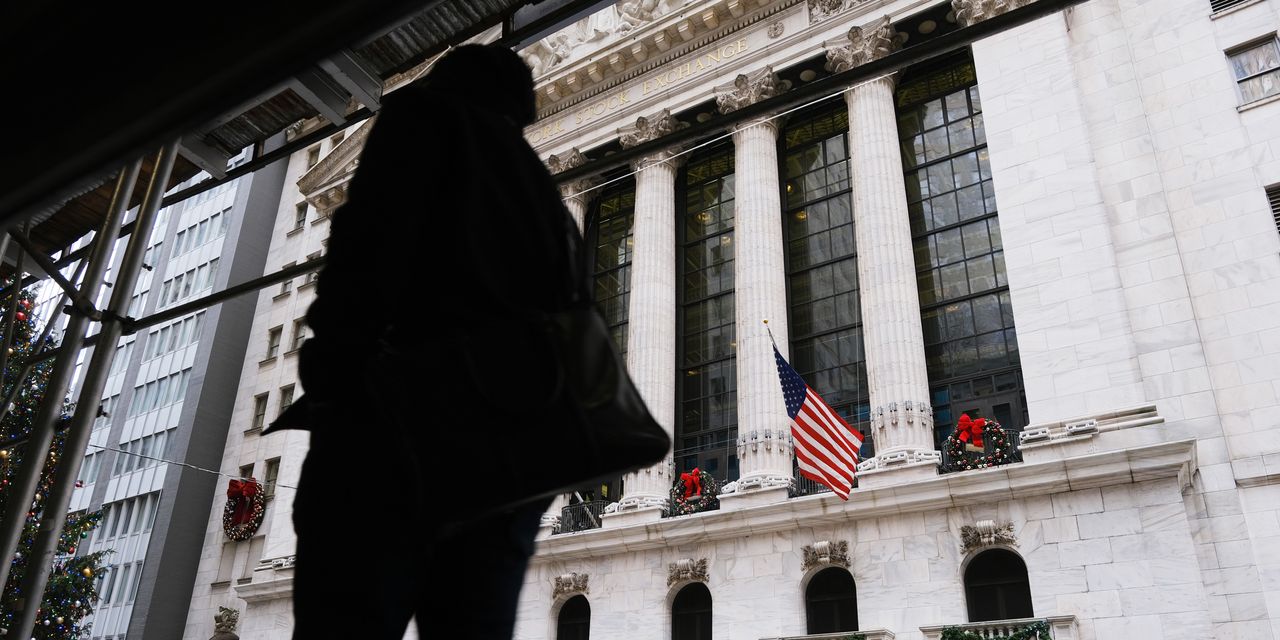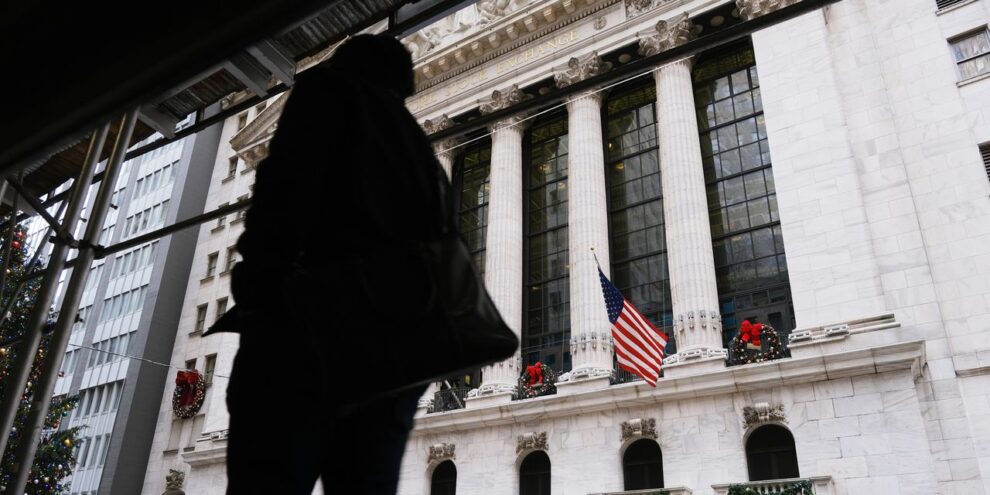
U.S. equity benchmarks booked their best day of gains in a week Wednesday, after the Federal Reserve announced a speedier reduction of its monthly asset purchases in the face of persistently elevated inflation.
Fed policy makers also now think official interest rates could rise three times in the coming year, rather than the sole hike penciled in earlier.
How did stock indexes trade?
- The Dow Jones Industrial Average DJIA, +1.08% rose 383.25 points, or 1.1%, to end at 35,927.43, just below the session high of 35,943.84.
- The S&P 500 SPX rose 75.76 points, or 1.6%, to close at 4,709.85, its second highest close ever.
- The Nasdaq Composite Index COMP, +2.15% added 327.94 points, or 2.2%, to finish at 15,565.58, after trading 0.9% lower in the session.
- Best daily gains for all three indexes in a week and the best on a Fed meeting day since Nov. 5, 2020, according to Dow Jones Market Data.
All three benchmarks saw a second straight day of losses on Tuesday, with the Dow falling 106.77 points, or 0.3%, to close at 35,544.18. The S&P 500 slipped 0.8% to finish at 4,634.09. The Nasdaq Composite dropped 1.1%, to end at 15,237.64.
What drove markets?
Stocks rose on Wednesday, shaking off earlier losses, after the Federal Reserve opted to move more aggressively to normalize monetary policies to combat inflation.
The central bank, as expected, announced a faster reduction in the pace of its bond buying to tackle high inflation rates reminiscent of the 1980s. That means it will trim $30 billion from its original $120 billion program of monthly purchases of Treasurys and mortgage-backed securities, up from a $15 billion cut previously outlined.
“Tapering, to us, is just less dovish,” said Jack Janasiewicz, portfolio manager at Natixis Investment Managers Solutions, in a phone interview. “They are still purchasing assets, but at a slower pace.”
For its part, Natixis remains more focused on the size of the Fed’s roughly $8.7 trillion balance sheet than any incremental change in its asset purchases. “But if everyone else starts thinking tapering is a big deal, it is a big deal,” Janasiewicz said.
With the faster taper also comes expectations of higher interest rates next year, which have been putting particular pressure on growth-focused technology stocks that are more sensitive to interest rate changes.
“It was a hawkish surprise in terms of the dot plot,” said Collin Martin, fixed income strategist at Schwab Center, of the Fed’s new projections that short-term rates could increase three times next year.
“It just shows the power of high inflation and what it’s done to the Fed psyche, with even the doves having turned more hawkish,” he said, in a phone interview.
The move to normalize U.S. monetary policy also puts the labor market recovery in focus for 2022, particularly as the Fed works to keep inflation in check.
Investors also have been monitoring the effect of the fast-spreading omicron variant on the U.S. economy. The death toll in the U.S. already surpassed 800,000 from COVID-19, and the Centers for Disease Control and Prevention warned of a surge in U.S. cases, reportedly peaking in mid-January, that could overwhelm communities that haven’t seen denizens fully vaccinated.
In economic data, U.S. November retail sales advanced just 0.3%, well short of the 0.8% rise expected by economists polled by The Wall Street Journal. However, some analysts attributed the disappointing report to shoppers tackling their holiday wish-lists early this year to sidestep supply-chain bottlenecks, which helped drive up October retail sales numbers, while pushing down the November tally.
The National Association of Home Builders index increased in December for a fourth month in a row to 84 from 83 a month ago, with more builders viewing conditions as favorable than poor.
Read: The holiday season could still be a bright one despite disappointing November retail sales numbers
What companies were in focus?
- Shares of Samsara Inc. IOT, +7.39% a cloud-based Internet of Things company, closed 7.4% higher in their trading debut Wednesday, after its initial public offering priced at $23, the upper end of its proposed price range.
- Shares of Amazon.com Inc. advanced 2.5% after its cloud-service network, Amazon Web Services, on Wednesday said it was suffering a fresh outage, about a week after the service was down for hours last Tuesday, temporarily disrupting access to many popular sites.
- Shares of home-improvement retailer Lowe’s Cos. LOW, +2.01% rose 2% after its 2022 guidance fell short of forecasts.
- Eli Lilly stock LLY, +10.39% rose 10.4% after the pharmaceutical group lifted guidance with an update on its drug pipeline.
How did other assets perform?
- The yield on the 10-year Treasury note TMUBMUSD10Y, 1.454% rose 2.3 basis points to 1.460%. Treasury yields and prices move in opposite directions.
- The ICE U.S. Dollar Index DXY, -0.24%, a measure of the currency against a half-dozen other monetary units, was down 0.2%.
- In oil futures, West Texas Intermediate crude CL00, +1.07% for January CLF23, -0.27% delivery turned 0.2% higher to settle at $70.87 a barrel.
- Gold futures GC00, +0.32% for February delivery GCG22, +0.32% ended 0.4% lower to settle at $1,764.50 an ounce.
- The Stoxx Europe 600 Index SXXP, +0.26% closed 0.3% higher, while London’s FTSE 100 Index UKX, -0.66% lost 0.7%.
- In Asia, the Shanghai Composite Index SHCOMP, -0.38% fell 0.4%, while the Hang Seng Index HSI, -0.91% fell 0.9% in Hong Kong. China’s CSI 300 000300, -0.87% dropped 0.8%. Japan’s Nikkei 225 Index NIK, +0.10% was flat.
—Barbara Kollmeyer contributed reporting





